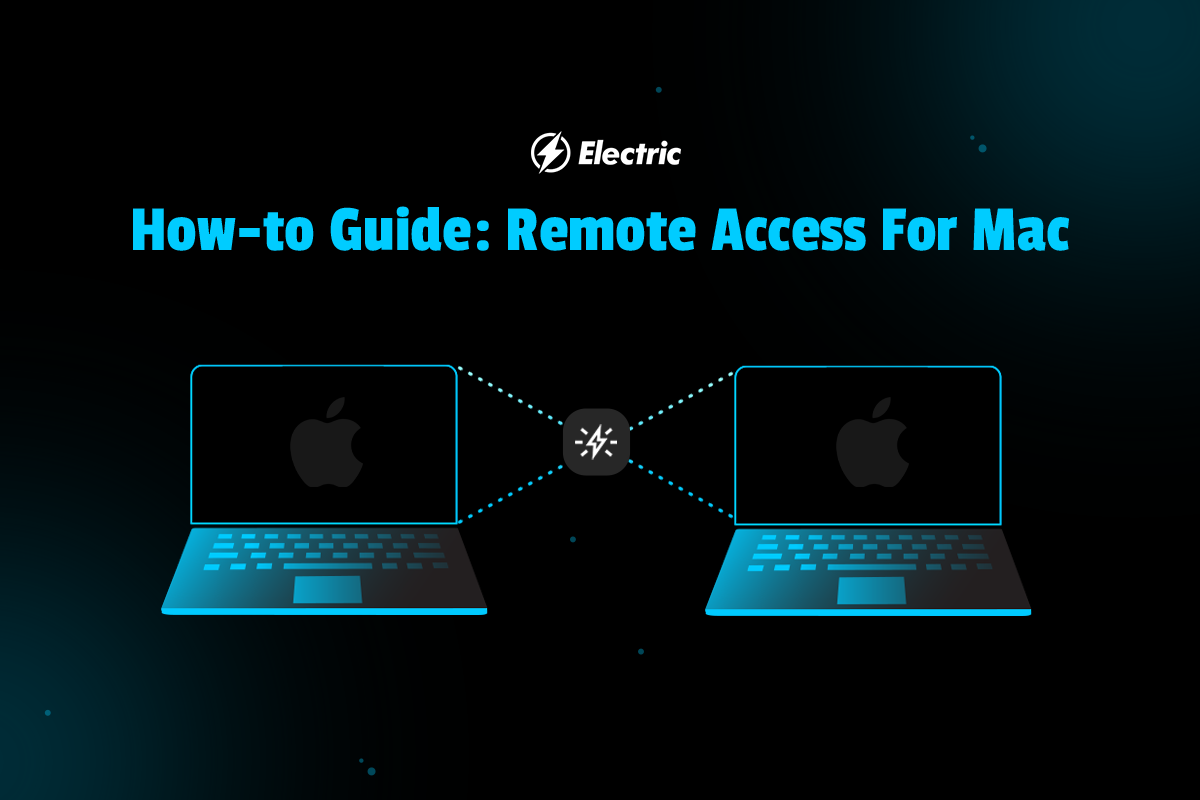
Working from home, whether fully remote or in a hybrid model, offers a range of advantages. Given the recent shifts in working environments, it has also become an increasingly popular option. While working from home has perks, it’s also important to have the right resources to be able to get your work done.
Understanding how to gain remote access for Macs can be helpful for working more effectively at home. Whether you’re trying to access certain files from the office or working with a client in a different location, here are some ways you or your remote IT team can access another Mac remotely.
What are the Best Remote Access Tools for Mac?
There are a variety of ways for remote and hybrid workers to gain remote access via Mac devices.
Apple Screen Sharing
Apple’s screen sharing feature allows users to control a Mac from another Mac. This means that you can use another Mac’s installed applications, even if they aren’t installed on your computer. To allow screen sharing on your computer:
- Open System Preferences from the Apple menu
- Click on the Sharing icon
- Check the box for Screen Sharing (uncheck Remote Management if it’s enabled as Screen Sharing and Remote Management cannot both be used at the same time)
- Click on Computer Settings to configure permission settings. Set access permissions to either “all users” or “only these users,” and grant access to the user that needs to connect.
In the Sharing Window, you will be able to see the Computer Name, as well as the VNC address. You’ll need at least one of these in order to connect from another computer.
To access someone’s shared screen, the person connecting will be on the same network as the computer they are connecting to. This is done by connecting to the VPN of the business. Then:
- Open the Finder window
- Click Network under the Locations section in the sidebar
- Select the Computer Name of the Mac you want to share
- Click Share Screen
- If required, enter the username and password to sign in
If you are unable to find the Computer Name under the Locations section, you can try connecting using the VNS address:
- In the Finder bar and under the Go menu, click Connect to Server
- Enter the VNC address of the Mac you want to share
- Click Connect
- If required, enter the username and password to sign in
iCloud Drive
For Mac users that occasionally work from home and need remote access to their files, iCloud Drive can allow them to do so. However, iCloud is generally not recommended as a solution for storing work files, as connecting a work computer to a personal iCloud can result in all personal files and photos being accessible. If you still decide to enable remote access through iCloud, you can do so by:
- Open System Preferences from the Apple menu
- Click on iCloud icon
- Check the box for iCloud Drive
- Once checked, click on Options beside iCloud Drive
- Check the box for Desktop & Documents Folders
At the bottom of the same window, there is another checkbox that says Optimise Mac Storage. When this box is checked, files and documents will be stored in both your Mac and your iCloud Drive. If there is no space on your computer, then the contents will only be stored on iCloud. This will allow you to access your Mac’s Desktop, Documents folder, and Apple apps folders, such as Pages, Numbers, etc., from any Mac or iOS device using your Apple ID.
Other Remote Access Software for Macs
Cloud Storage
There are a variety of cloud based solutions (Google Drive is an Electric favorite) out there that are helpful for employees to have remote access for files, documents, and applications that are needed to do their work. Many companies look to cloud storage solutions to reduce the costs of purchasing and maintaining physical hard drives for their company data. Additionally, cloud storage easily provides employees with remote access to company data at any time, anywhere. With different levels of security offered with each solution, small businesses can provide employees remote access for Macs and PCs without having to fret over their cybersecurity.
Virtual Desktops
Virtual Desktop Infrastructures, or VDI, allow users to use their computer to log onto a separate operating system which is hosted on a server. This can be a favorable option for small to mid-sized businesses. Employees will be able to have remote access to data and applications that are needed for their jobs without actually saving it onto their own physical device. This creates a more secure environment that is also scalable when your company decides to grow.
Remote Access for Macs Powers Hybrid Work
Remote access opens up a world of possibilities when it comes to working from home, but accessing company data outside of a secure setting is always a huge security risk for companies and employees. So, if your employees work remotely some or all of the time, consider implementing additional cybersecurity measures. Or, better yet, consider partnering with Electric—the antidote to traditional IT solutions, and the best, most affordable solution for small and mid-sized businesses. Our helpdesk (located in our New York office) can not only implement proactive cybersecurity measures, but we can also troubleshoot just about any IT issue an employee might face when working from home (or in the office, for that matter).



